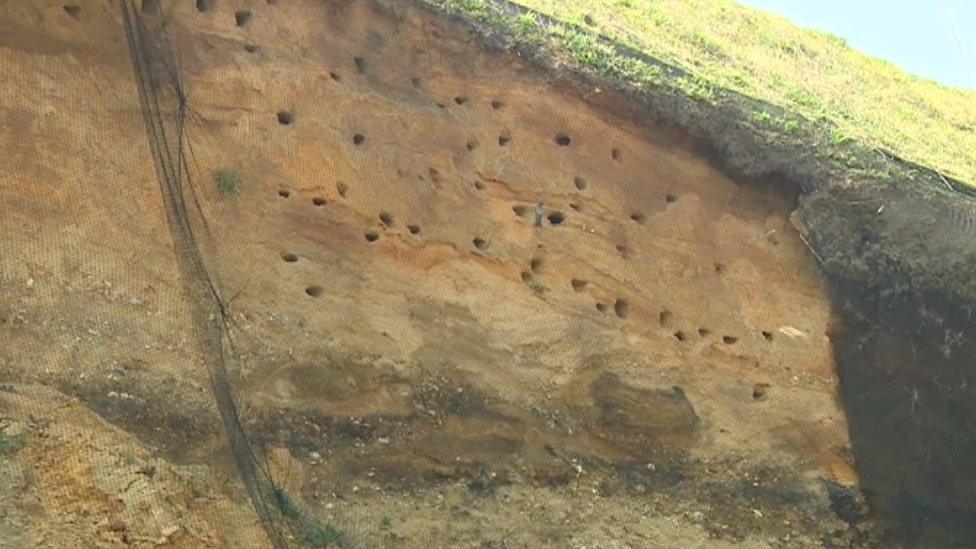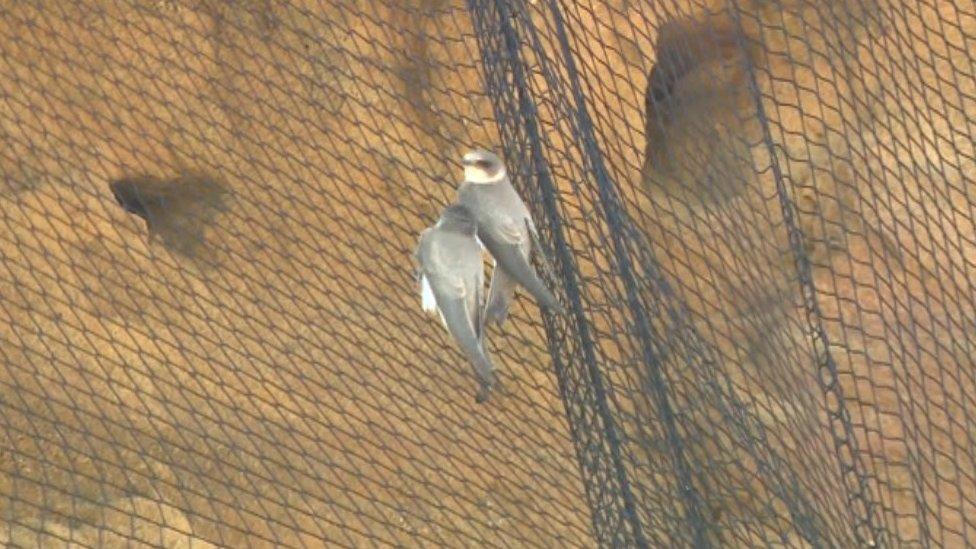RSPB says Norfolk cliff netting 'will save sand martins from suffocating'
- Published

The RSPB feared there was a "risk of birds getting stuck in or behind the netting and as a result dying"
Lower levels of netting on a cliff face may be needed to prevent sand martins being suffocated, the RSPB bird charity has accepted.
The RSPB led criticism of the way North Norfolk Council put nets up at Bacton last month, which aimed to encourage birds to nest further along the coast.
A scheme to prevent erosion will see sand deposited at the cliff base.
After talks with the RSPB, the council agreed to remove an upper area of netting.
The RSPB said it still wanted the council to use a finer mesh lower down which birds cannot get trapped in, when they nest in holes in the sandy cliff.

Campaigners staged a protest at the cliffs on Tuesday evening
The installation of the netting sparked a major protest and a Facebook group, with more than 2,000 members, talked of the "public disgust" at the council's actions.
Following the backlash the council had talks with the RSPB.
An RSPB spokesman said: "The council has made a sensible decision to start removing the upper section of the netting along the central and western areas of the cliff face tomorrow [Thursday].
"However, the council need to keep the bottom layer of [sand martin] burrows covered for the sand-scaping project to happen in time to stop coastal erosion.
"A huge amount of sand will be deposited on the beach, and if these burrows are left open to the sand martins to nest, there is a high risk the burrows [will be filled in], and therefore sand martins could be suffocated.
"Ultimately, these nesting burrows will be covered as a result of the project."
On Monday, Jeff Knott, regional director of RSPB, said there was a risk of birds "dying" if they got stuck in netting, which the RSPB said was not of the type they had recommended.

The RSPB said it had reached out to the council to offer advice
Earlier a council spokesman said the anti-erosion scheme was "designed to protect hundreds of homes in Bacton and Walcott, and the critical infrastructure of Bacton Gas Terminal".
He added: "It has been subject to full environmental impact assessment, planning permission and marine licence applications."
- Published9 April 2019

- Published8 April 2019
